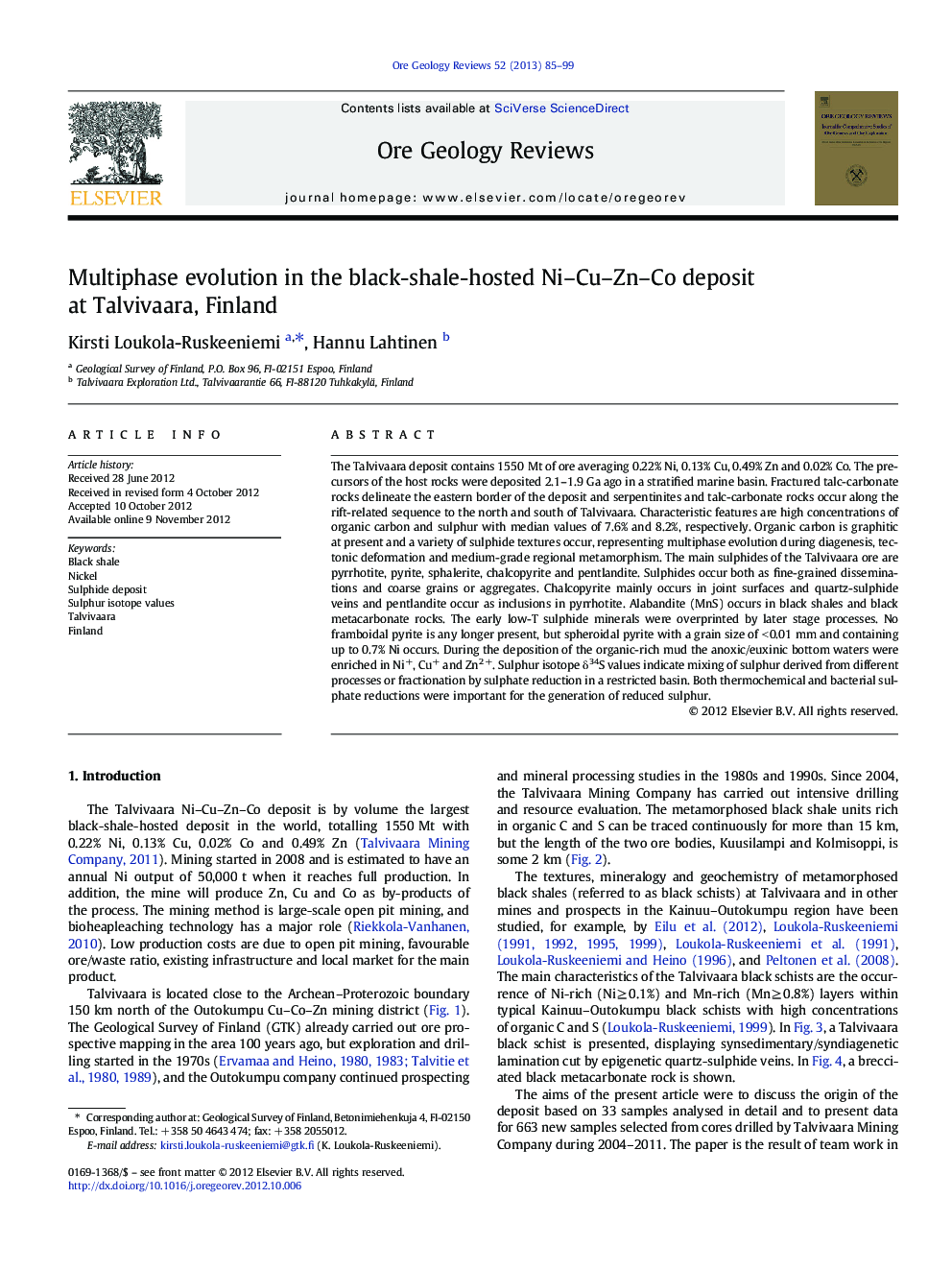| Article ID | Journal | Published Year | Pages | File Type |
|---|---|---|---|---|
| 4697596 | Ore Geology Reviews | 2013 | 15 Pages |
The Talvivaara deposit contains 1550 Mt of ore averaging 0.22% Ni, 0.13% Cu, 0.49% Zn and 0.02% Co. The precursors of the host rocks were deposited 2.1–1.9 Ga ago in a stratified marine basin. Fractured talc-carbonate rocks delineate the eastern border of the deposit and serpentinites and talc-carbonate rocks occur along the rift-related sequence to the north and south of Talvivaara. Characteristic features are high concentrations of organic carbon and sulphur with median values of 7.6% and 8.2%, respectively. Organic carbon is graphitic at present and a variety of sulphide textures occur, representing multiphase evolution during diagenesis, tectonic deformation and medium-grade regional metamorphism. The main sulphides of the Talvivaara ore are pyrrhotite, pyrite, sphalerite, chalcopyrite and pentlandite. Sulphides occur both as fine-grained disseminations and coarse grains or aggregates. Chalcopyrite mainly occurs in joint surfaces and quartz-sulphide veins and pentlandite occur as inclusions in pyrrhotite. Alabandite (MnS) occurs in black shales and black metacarbonate rocks. The early low-T sulphide minerals were overprinted by later stage processes. No framboidal pyrite is any longer present, but spheroidal pyrite with a grain size of < 0.01 mm and containing up to 0.7% Ni occurs. During the deposition of the organic-rich mud the anoxic/euxinic bottom waters were enriched in Ni+, Cu+ and Zn2 +. Sulphur isotope δ34S values indicate mixing of sulphur derived from different processes or fractionation by sulphate reduction in a restricted basin. Both thermochemical and bacterial sulphate reductions were important for the generation of reduced sulphur.
► Talvivaara is the largest black-shale-hosted Ni-Cu-Zn-Co deposit in the world. ► Organic-rich mud and sand deposited 2.1–1.9 Ga ago in stratified marine basins. ► Sulphide textures evidence for multiphase tectonic and metamorphic deformation. ► Rare earth element results indicate sulphate reduction from low-T fluids (< 200 °C). ► We present chemical data of 696 new drill core samples.
